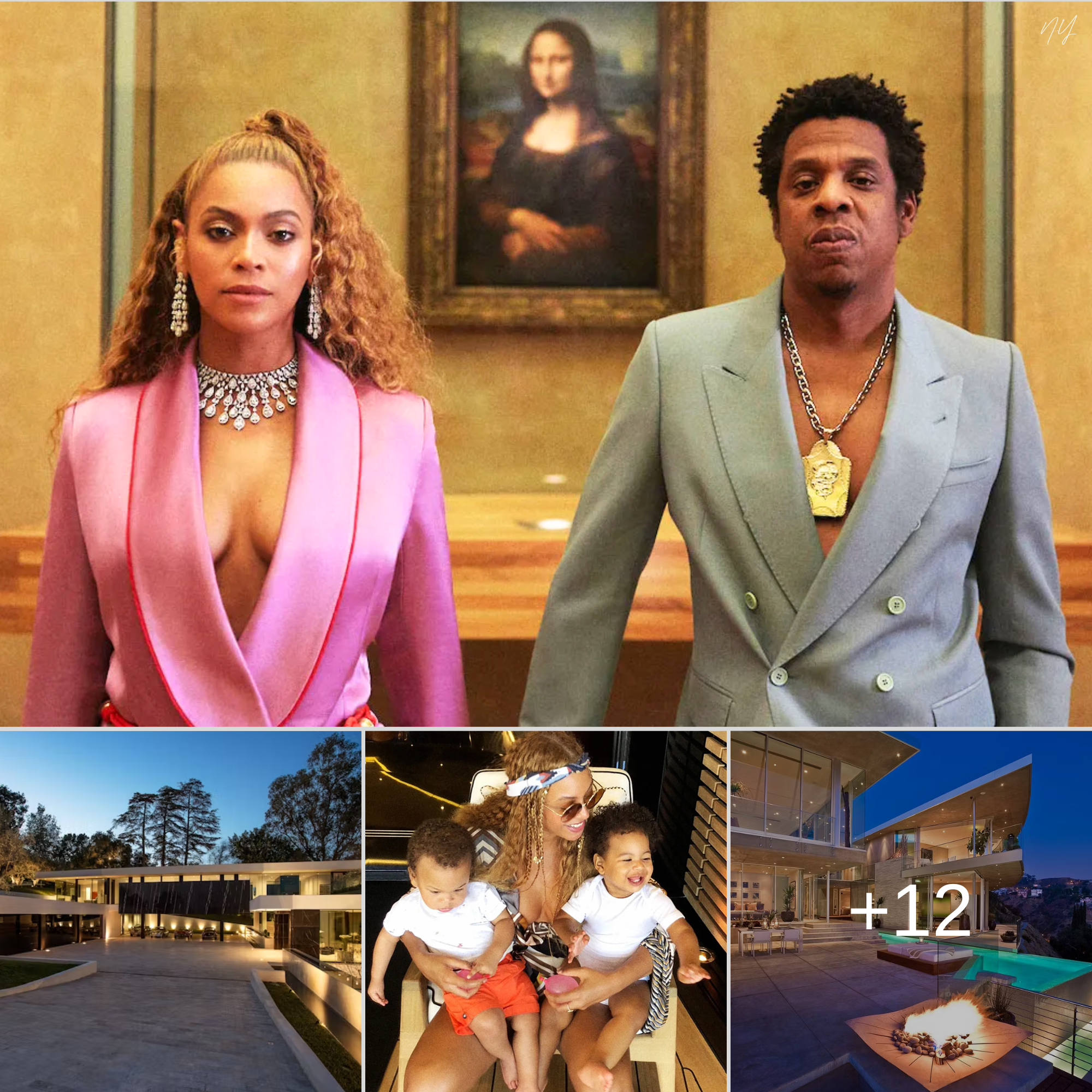
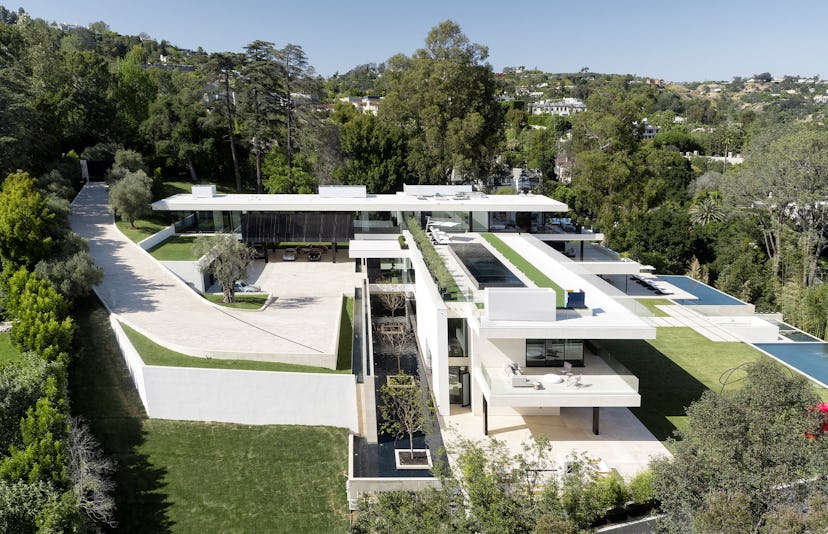
A rare look at the entrance of the $120 million Bel-Air home purchased by Jay-Z and Beyoncé, which boasts bulletproof windows and a helipad.
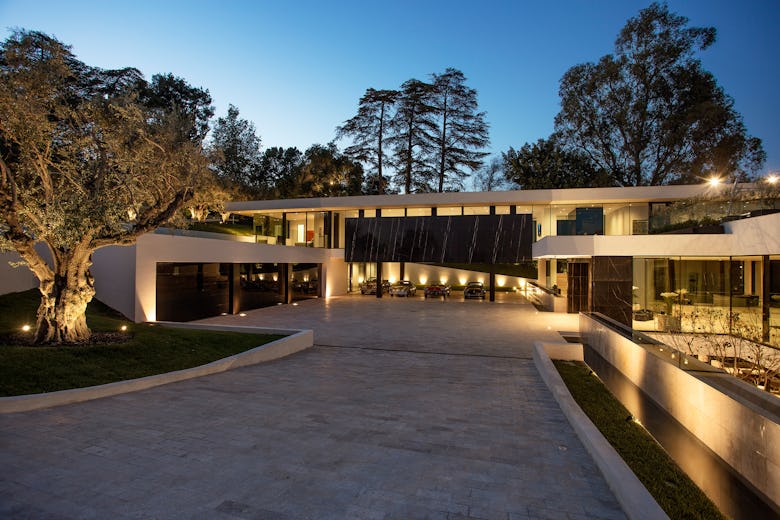
McClean points out a white cluster in the mountains just east of the Getty Museum. “You probably can see it from space,” McClean says of the spec home he installed there. This particular one is asking an astonishing $500 million, making it the most expensive mansion in America (a title currently held by another Bel Air property not of his design, listed at a mere $350 million). Dubbed “The One,” the McClean house comes with a 30-car garage, a 5,000-square-foot master bedroom, and a casino, among other features that balloon it to nearly 100,000 square feet.
“It doesn’t feel like a 100,000-square-foot house when you’re inside it,” McClean explains. “It feels more like a 30,000-square-foot house.”
McClean has cornered the .1% housing market by building grandiosity in the most minimal of architectural styles. Consider what a gigamansion might look like, tricked out with top-of-the-line security, staff quarters, and, in the case of Beyoncé’s new home, bulletproof windows. One does not envision, say, an austere Frank Lloyd Wright house at one with the nature around it.
Inside the Bird Streets mansion purchased by Calvin Klein for $25 million in 2015.
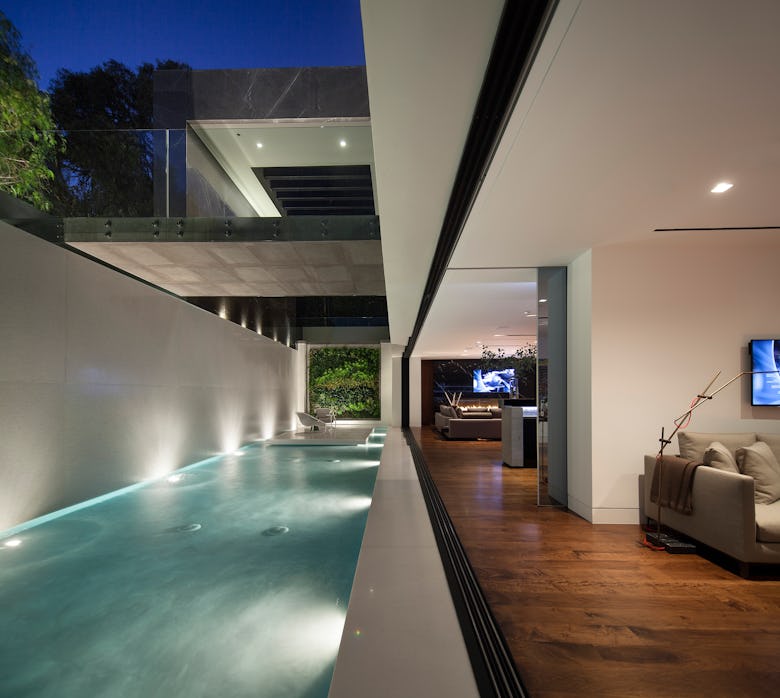
But for the discerning L.A. buyer—that is, if you’re a celebrity or a sheik—privacy is paramount. McClean’s homes come with fantastic views, and, like the classic midcentury L.A. home, elide indoor-outdoor space, but they are also hidden. The owners of these homes can certainly see you, though you can’t see them. A McClean could easily appear in leveled celebrity enclaves like barren Calabasas or the flats of Beverly Hills, but that’s not where you will find them. They are nestled in the mountains of the Hollywood Hills and Bel Air, where large-scale construction is notoriously difficult for about a hundred reasons. McClean designs for people who want both understatement and ostentatiousness—taste and tastelessness in the same package. His clients want the clean lines of Richard Neutra, but with a hair salon on site, please. These houses represent the pinnacle of the L.A. real-estate bubble, because they should be impossible.
This house, on Blue Jay Way, was McClean’s first Bird Streets home, and was purchased by Aviici in 2014.
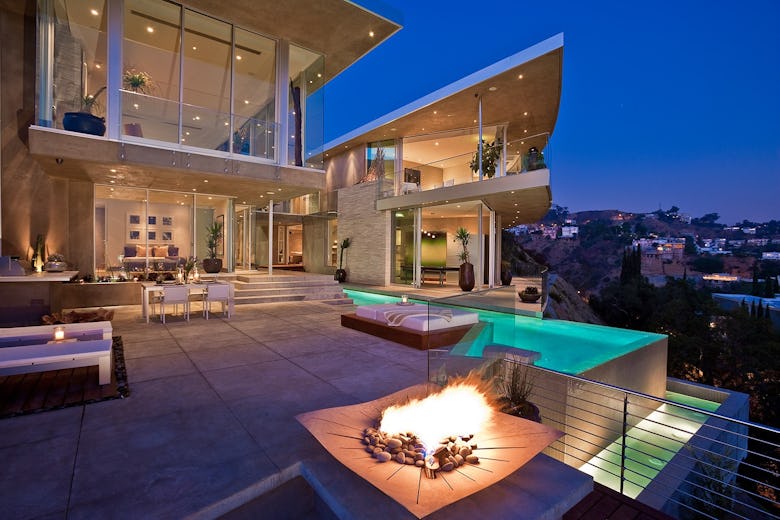
In the last few years, L.A. has passed several anti-“mansionization” ordinances, some which restrict a home’s size based on the percentage of its lot it occupies. Residents of Bel Air even formed a homeowners alliance to dissuade the development of mega-properties such as “The One,” which is three times the size of the Taj Mahal. And naturally, local realtors and architects have resorted to name-calling, many referring to McClean as the dreaded developer-architect. Nevertheless, developers continue to hunger for size, and McClean delivers a stealth blockbuster, appearing to effortlessly circumvent such rules.
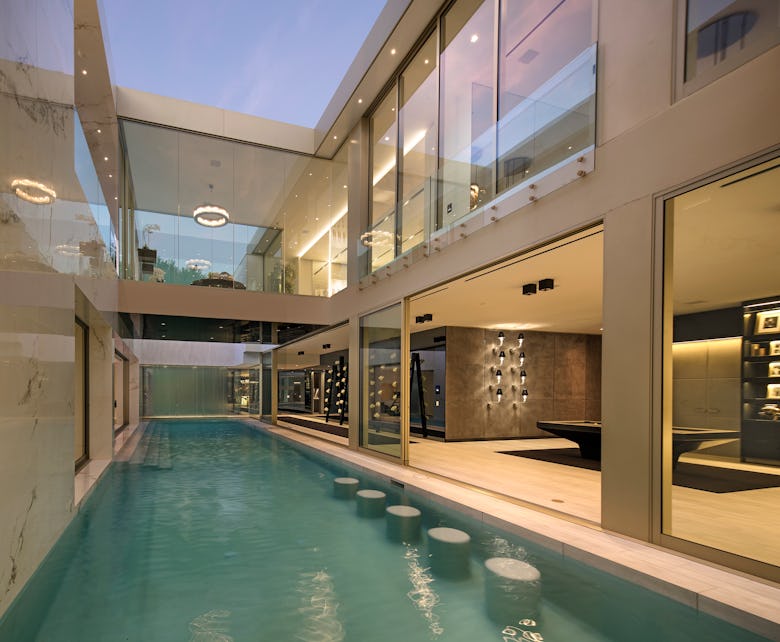
In 2008, his first home in the Bird Streets came on the market, on Blue Jay Way. Originally designed for a client who ran into money trouble, it became an accidental spec.
A Carla Ridge mansion in Beverly Hills developed by Nile Niami, with six bedrooms, eight bathrooms, a two-story water feature, and an olive tree courtyard.
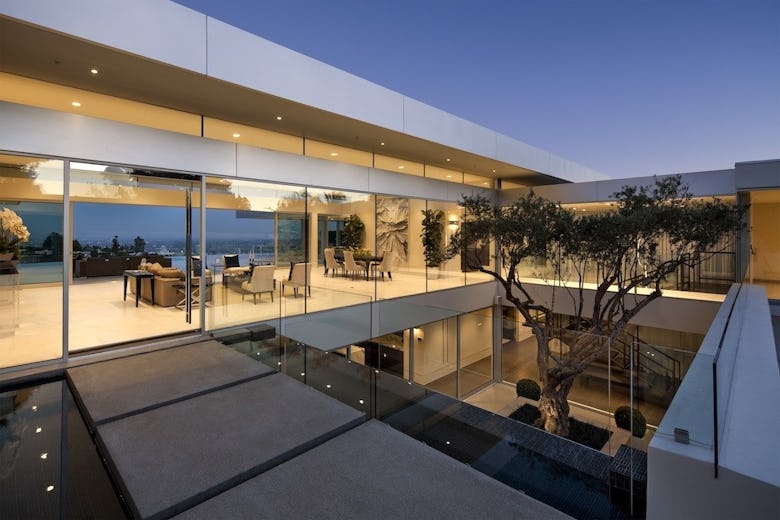
If L.A. is in the midst of an unprecedented real-estate boom, McClean is leading from the front. He has complicated feelings about the “blunt” laws put in place to curb large-scale construction: “I feel a lot of these processes stymie creativity,” he says, often reverting to talk of “play” and “exploration” when talking about spec homes. “At the price point we’re at you can let your imagination run riot and you can do all sorts of fun things,” he says. “People want you to. They’re not holding you back.”
There’s a fantasy-logic McClean subscribes to in order to explain away the excess of these dream homes: At various points, he said that clients really do use all the space, that the excessive pools and fountains serve to naturally cool the homes, that a typical client’s private-jet travel is much more of a burden on the environment.
I ask McClean point-blank if he thinks his homes are just too big. Or more specifically, why people want homes bigger than ever before.
“In a way, it’s new,” McClean says. “In another way, it’s as old as the pyramids, right?”